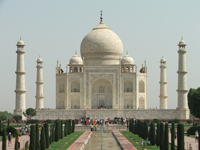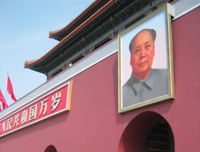 The rise of Brazil, Russia, India and China has the potential to transform the world economy and offer growing export opportunities. Owen McQuade looks at their potential.
The rise of Brazil, Russia, India and China has the potential to transform the world economy and offer growing export opportunities. Owen McQuade looks at their potential.
The term ‘BRIC economies’ (for Brazil, Russia, India and China) was the result of research by Goldman Sachs economist Jim O’Neill. His research moved thinking about these economies from being perceived as ‘emerging economies’ to being seen as ‘growth markets’. These new growth markets, which he sees as having moved from emerging to emerged, are the result of globalisation which has been driven by advances in technology and by political reform. When O’Neill wrote his research paper in 2001, these four economies amounted to 8 per cent of global GDP and his findings were not reported widely. Since then, all four of the BRIC countries have exceeded O’Neill’s expectations. The aggregate GDP of the BRIC countries has nearly quadrupled, from around €3 trillion to €12 trillion. The world economy has doubled in size since 2001 and a third of that growth has come from the BRIC economies.
These economies had previously been perceived as not fully mature or capable of reaching the same degree of wealth as developed countries for many decades, if ever. However, China played a key role in resolving the 1997 Asian economic crisis and this heralded its arrival as the new economic superpower to rival the USA. The taming of inflation, particularly in Brazil, was another turning point for the surge in these new growth markets. Demographics also play a major factor in their development; this area is a particular challenge for many developed economies with ageing populations.
Some commentators have said that the effect of the BRICs on the world economy has been exaggerated because their growth was primarily driven by exports to the developed markets and in the rise in commodity prices over the past decade. Exports certainly played a major role for China but with the credit crisis that is no longer the case. In India, domestic demand has been the driver throughout the last decade and, increasingly, it is the domestic consumer and spending on infrastructure that is driving the BRIC economies.
Manufacturing sales from Northern Ireland (£ million)
|
Brazil |
Russia |
India |
China |
| 2010-11 |
23.0 |
35.5 |
18.7 |
69.0 |
| 2009-10 |
14.2 |
35.5 |
29.3 |
76.7 |
| 2008-09 |
31.0 |
81.7 |
41.5 |
84.2 |
| 2007-08 |
15.9 |
64.0 |
17.0 |
37.8 |
| 2006-07 |
5.5 |
Not available |
37.9 |
33.7 |
Source: DETI
 |
Brazil
Brazil with its population of 190 million has seen a transformation of its economic fortunes over the past decade. Of all of the BRICs, it is the most popular for foreign direct investment and until very recently has been relatively unaffected by the economic crisis. Many have put the taming of inflation as the cornerstone of its economic performance. It has plenty of commodities and good demographics but these drivers have always been over-shadowed by high levels of inflation. Crime has also been a barrier to inward investors but this has improved in recent years, and with the hosting of the 2014 World Cup and the 2016 Summer Olympics there is much optimism about the country’s economic fortunes. |
 |
Russia
Russia is strong in education and communications which has driven economic activity over the past decade. But with its weaknesses in governance and its over-reliance on oil and gas resources, many believe it should be dropped from the BRICs. O’Neill makes a strong case for Russia and believes that it will achieve its economic potential to have a higher GDP than the other BRICs and even higher than all other European countries. |
 |
India
India has the most favourable demographics in the world but also faces many challenges. Its 1.2 billion population has far more young people than China. On paper, it has advantages of a credible legal system and many English speakers and a home-grown technology sector.
However, in many areas it is 15 to 20 years behind China, including in urbanisation which has been a key Chinese economic driver. It has many infrastructural problems and an undeveloped and cumbersome political and administrative system. Although India does produce large numbers of English-speaking technology graduates, the vast bulk of the population remains uneducated with very limited access to technology. |
 |
China
With its 1.3 billion population and explosive economic growth, many see China as the most important of the BRICs. In 2001, China’s GDP was around US$1.5 trillion, smaller that that of the UK or France. It now dwarfs both and in 2010 overtook Japan to become the second largest economy in the world. Many commentators, including the Economist’s writers, forecast China to overtake the US as the world’s largest economy by 2020. O’Neill has a couple of anxieties about China that might threaten future economic growth.
The first of these is the most obvious: political reform. The second is related to the authoritarian rule in place and the West’s anxiety of the rise of China, which many perceive to be a threat. There are also some who see China’s gain as the West’s loss. O’Neill says that this is simply not true, with both China and the West both benefiting from China’s rise. |
 The rise of Brazil, Russia, India and China has the potential to transform the world economy and offer growing export opportunities. Owen McQuade looks at their potential.
The rise of Brazil, Russia, India and China has the potential to transform the world economy and offer growing export opportunities. Owen McQuade looks at their potential.








